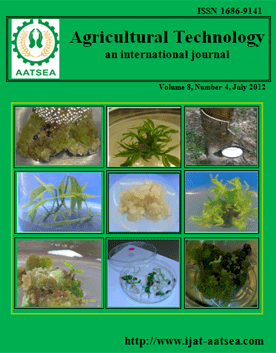ThaiScience
ThaiScience
INTERNATIONAL JOURNAL OF AGRICULTURAL TECHNOLOGY
Volume 16, No. 03, Month MAY, Year 2020, Pages 611 - 618
Body darkening as thermal stress indicator for nile tilapia (oreochromis niloticus l.)
Dela Cruz, M. B.
Abstract Download PDF
Increasing water temperature due to global warming has decreased the aquaculture production of tilapia in the Philippines. Stress is the initial effect of increasing temperature, but when stress prolongs and not predicted nor prevented, fish health is suppressed and may lead to mortality. Thus, stress indication is of premium importance. In order to provide a more convenient and reliable stress indication, this study had reported a morphological response parameter (body darkening) as a thermal stress indicator and used other established parameters to determine their associations and reliability. Results suggested that body darkening and all other stress indictors were positively and significantly related to water temperature. Particularly, 80.50% of the variations in body darkening scores were brought by the changes in water temperature. More so, body darkening revealed highly significant positive relationships with the darkening of the eye (ρ = 0.902, p <0.000, n =22), ventilation rates (ρ = 0.902, p <0.001, n =22), and cortisol levels (ρ = 0.868, p <0.001, n =22). Similar to other known stress indicators for fish, body darkening is likewise a realible, convenient, sensitive, and a non-invasive stress indicator.
Keywords
Ventilation, Indication, Cortisol, Eye color patternINTERNATIONAL JOURNAL OF AGRICULTURAL TECHNOLOGY
Published by : Association of Agricultural Technology in Southeast Asia (AATSEA)
Contributions welcome at : http://www.ijat-aatsea.com
